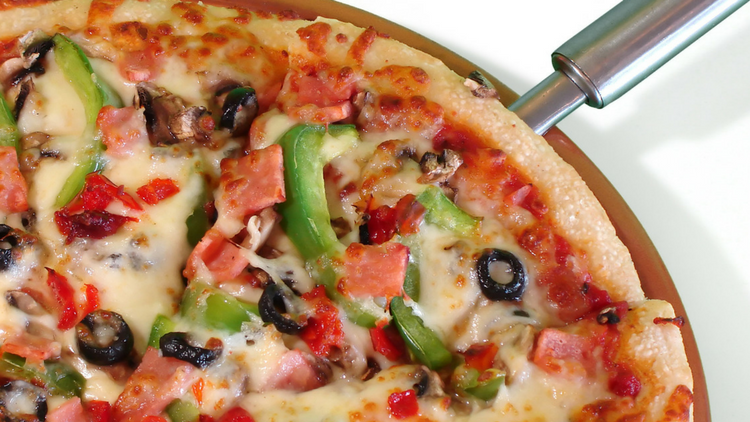
5 Shocking Facts About Takeaway Food You Probably Don't Know
Even the smartest dieter still turns to his or her favorite takeaway every once in a while. And why shouldn’t you? After all, smart dieting isn’t about being perfect, it’s about knowing how to balance healthy foods with those you treat yourself to now and again.
But do you know everything about takeaways? After all, they don’t want you to know all the secrets about what’s lurking in your food or behind the scenes.
Read on to learn why you should avoid fast food in general, and 5 things your local takeaway doesn’t want you to know – but you should!
Why you should avoid takeaways
It’s impossible and unrealistic to avoid takeaways at all costs. Nor are all takeaways created equal. In fact, there are more healthy, natural options at takeaways now than ever before. Thus, it isn’t detrimental to your diet to eat food from takeaways every now and again.
4 Food Swaps That Will Flatten Your Belly In A Week >>
However, there’s still one major reason to avoid takeaways, if possible: The danger of the unknown. With takeaways, you don’t see how the food is prepared. You don’t know where the ingredients come from. And, moreover, you’re taking the risk that the employee who prepares the food didn’t do so in a healthy, safe environment.
There can be other problems with takeaways, too, 5 of which we explore in greater detail below. The important thing to remember is that if there is an option to eat out or stay in, staying in is the best way for you to have control over every aspect of your meal from ingredient selection to the finished product.
1. They use poor, artificial, and puzzling ingredients
When you go to the grocery store, you select the best-looking produce because you want healthy, fresh ingredients going into your body. But do you know what ingredients your favorite takeaways are using?
Truth be told, many takeaways use meat from animals kept in abhorrent conditions, many of which are also fed antibiotics as a result. This means that you aren’t just consuming meat, you’re consuming antibiotics, too.
Moreover, many fast foods contain ingredients that are unnecessary except for long-term preservation. Or fast food meats are filled with unsavory additives, like waste scraps and chemicals, but you’ll never know the difference. In fact, most takeaway meals, no matter how “healthy” they appear, are filled with chemical preservatives, artificial coloring, and more. Recent studies reveal that even fast food packaging is packed with chemicals!
One additional problem is that most takeaways save money by purchasing low-quality ingredients. Many takeaway meals come with wilted vegetables and meat derived from unknown parts of an animal, among other problems. Thus, it’s important that you consider how transparent a company is, not only with what ingredients they use, but where they come from and what exactly is in each meal you’re considering.

2. They aren’t training employees at length (or at all) in food safety
Though some takeaway employees take their jobs seriously, the same isn’t true for all. Some may have not received the training necessary to understand proper food preparation, cooking, and handling.
The biggest issue with takeaways is employee turnover. Takeaways often hire employees who stay with the company for only a short amount of time. These employees receive little to no training because companies don’t believe this training is worth their while.
For this reason, contamination is an issue. It’s possible that an employee touching your food didn’t wash his or her hands, or touched raw meat before touching something that isn’t going to be cooked on your plate. As such, when you want to be safe and not sorry, it’s best to eat at home.
3. There are trans fats in the food
Trans fats are among the worst kinds of fat because they not only raise your LDL, or “bad” cholesterol, they lower your HDL, or “good” cholesterol, as well. This can drastically increase your risk of heart disease and other health complications.
Traditionally, trans fats are in fried foods due to the oil required to cook the food. However, trans fats can also be lurking in pre-processed breads, margarine, baked goods, and other common fast food items.
Because trans fats have been largely eliminated from common use, not all restaurants are required to disclose that their food contains these fats. So it’s important to be wary of common fried foods, like chips, and fried meats, like chicken.
4. There’s little nutritional value to the Takeaway food, even if it appears “healthy”
Because takeaway foods are commonly loaded with preservatives and other chemicals, they aren’t as healthy as they appear. In fact, even foods that may sound healthy – like salads – often have unhealthy additives or fats lurking within.
To cut a long story short: Always check what you’re ordering and where the food comes from. Doing so is the easiest way to ensure you’re getting a meal that doesn’t just look, sound, or taste good, but is good for you as well!
5. They’re major contributors to obesity
Obesity is an increasingly prevalent problem around the world, especially childhood obesity. More and more parents turn to takeaways regularly for meals, not only for themselves, but for their families. As you can imagine, the high fat content and low nutritional value of most takeaway foods wreak havoc on a child’s body composition, especially from a young age.
Can You Really Lose Weight Without Dieting? >>
It’s important to be cognizant of what you’re ordering for your children, and yourself, when you go to a takeaway. Moreover, you should consider the long-term implications of what fast food can do not only to you, but to your family as well.
Now that you know more about takeaways, use the knowledge to your advantage
Takeaways can be a simple way to get a quick meal for you or your family. However, it’s important to be well-educated about what you’re eating to make the healthiest choices possible in the circumstances.
With the five bits of knowledge above, you can do just that!





